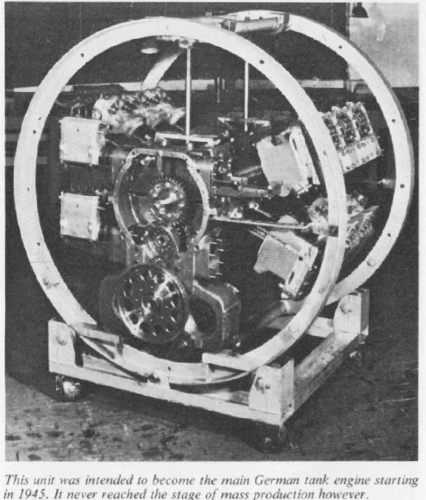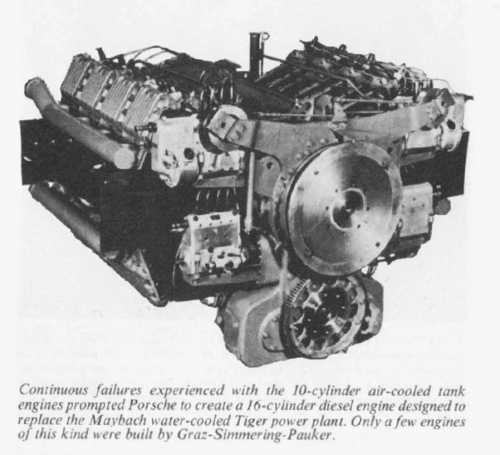- Joined
- 22 April 2012
- Messages
- 2,272
- Reaction score
- 2,036
I have seen a number of references to an engine referred to as the Sla 16 that was a product of Simmering- Graz-Pauker (Vienna), possibly with Porsche involvement (designation Type 212). Apparently it had a power output of 730-750 hp and was configured as an 37 litre, air cooled, supercharged X-16 unit. According to an article in The Military Engineer: Volume 38 (1946) five engines were manufactured and tests were 'satisfactory beyond expectations'. There are suggestions in various forums that at least one of these engines were installed in a Jagtiger so the reference to successful tests may be referring to that application. The Military Engineer article states that the engine was to replace the HL230. Furthermore there are references to this engine design being modular with the intention being to provide different sized engines (based on number of cylinders and basic layout) for different classes of vehicle and that production was scheduled at Steyr Daimler Puch as well as Simmering-Graz-Pauker, the Military Engineer article states that production plans fell through due to the end of the war. There are pictures of this engine available online if you use google image search.
The Deutz engine that was under consideration was apparently the T8M118 which seems to have been a 700hp liquid cooled V8 diesel.
The Deutz engine that was under consideration was apparently the T8M118 which seems to have been a 700hp liquid cooled V8 diesel.
Last edited:


